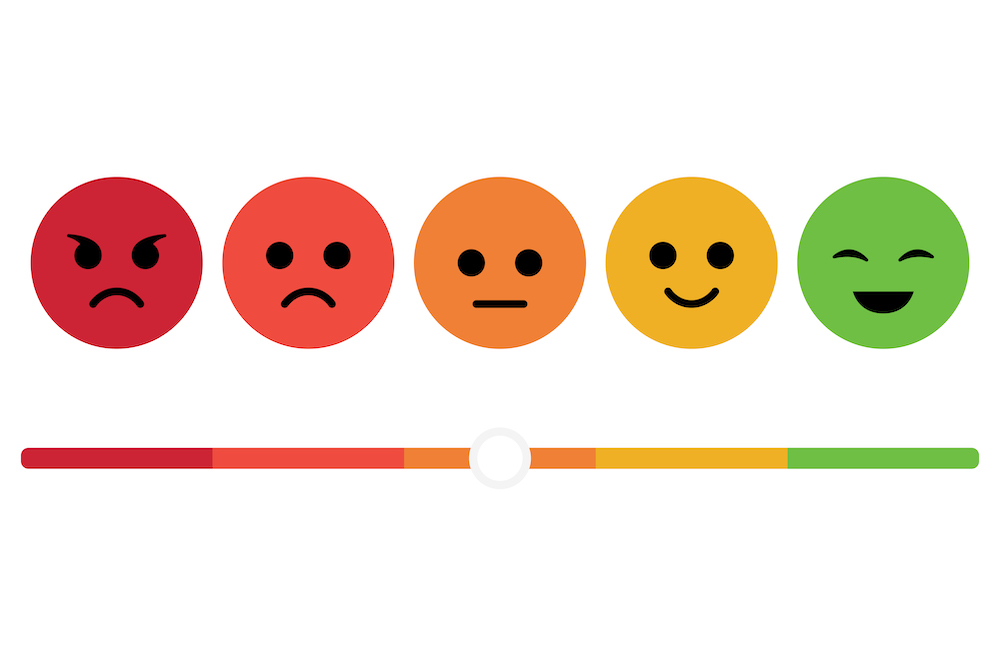Throughout this article, you will learn what the customer effort score entails, including the significance of the customer effort score calculation and the optimal way to pose a customer effort score question in surveys
Understanding your customer's journey and the effort they must expend to achieve their goals is crucial. The customer effort score (CES) has emerged as a pivotal metric for evaluating customer satisfaction and loyalty, directly impacting your company's growth and success. By measuring how easy or difficult it is for your customers to interact with your product or service, you can gain valuable insights into areas needing improvement, thus enhancing the overall user experience. This introduction to CES and the use of customer effort score surveys will guide you in leveraging this powerful tool to boost customer satisfaction and foster loyalty.
Throughout this article, you'll learn what the customer effort score entails, including the significance of the customer effort score calculation and the optimal way to pose a customer effort score question in surveys. We will delve into the different types of customer effort score surveys, guiding you on how to craft an effective survey that yields meaningful data. Additionally, the article will cover the strategic timing for sending out these surveys to maximize response rates and how to accurately calculate your customer effort score, providing a comprehensive understanding of the benefits of measuring and optimizing CES for your business success.
What is Customer Effort Score (CES)?
The Customer Effort Score (CES) is a crucial metric used to measure the ease with which customers can interact with your company. It specifically assesses the amount of effort required by customers to resolve issues, fulfill requests, make purchases or returns, or get answers to questions. This single-item metric is usually gauged through CES surveys, which ask customers to rate on a scale from "very easy" to "very difficult" how easy it was to interact with your company.
Understanding CES is vital because it directly correlates with customer loyalty and retention. The easier and more seamless the experience, the more likely customers are to remain loyal and continue using your services or products. CES is not only a measure of customer satisfaction but also an indicator of how likely they are to engage with your business in the future.
CES surveys are designed to be quick and straightforward, making it easy for customers to provide feedback. This simplicity in feedback collection allows for consistent tracking of how your company performs over time in terms of customer effort. By monitoring this score, you can identify areas of friction and work to enhance the overall customer experience.
Moreover, CES is a versatile tool used across various customer interaction points. Whether after a purchase, during product onboarding, or post-service interaction, measuring the customer effort score provides insights into different phases of the customer journey. This metric helps businesses understand where improvements are needed to make customer interactions as effortless as possible, which is crucial in today's competitive business landscape.
Types of CES Surveys
When conducting a Customer Effort Score (CES) survey, selecting the right type of survey is crucial to accurately measure how easy it is for customers to interact with your services or products. Here are three popular types of CES surveys:
Likert Scale
The Likert scale is commonly used in CES surveys to gauge the ease of customer interactions. This scale typically ranges from "Strongly Disagree" to "Strongly Agree" and may include five to seven points. Each point on the scale corresponds to a specific level of agreement or disagreement, providing a nuanced view of customer effort. For instance, a statement like "The checkout process was easy to navigate" could be rated from "Strongly Disagree" to "Strongly Agree". This method helps in capturing more detailed customer sentiments and can be particularly useful for detailed feedback on specific aspects of the customer experience.
Numbered Scale
Numbered rating scales are another effective way to measure customer effort. These can range from 1-10, 1-7, or 1-5, where typically, higher numbers indicate lower effort required by the customer. This type of scale is straightforward and allows for quick quantification of data. For example, you might ask, "On a scale of 1 to 10, how easy was it to resolve your issue today?" with 1 being very difficult and 10 being very easy. The simplicity of this scale makes it easy for customers to respond, thereby often increasing the response rate.
Emoticon Ratings
Emoticon ratings provide a visually engaging and intuitive way for customers to express their feelings about their experience. This type of survey uses emoticons ranging from sad to happy faces to represent different levels of customer effort. For example, a question like "How easy was it to use our service today?" could be answered with emoticons that visually represent the effort level, from a frowning face indicating high effort to a smiling face indicating low effort. Emoticon ratings are particularly effective for capturing immediate emotional responses and can make the survey experience more enjoyable for respondents.
Each of these survey types offers different benefits and can be chosen based on the specific needs of your survey or the kind of data you wish to collect. By understanding the nuances of each type, you can design a CES survey that best captures the effort your customers are experiencing.
How to Create an Effective CES Survey
To create an effective Customer Effort Score (CES) survey, it is crucial to design a survey that accurately measures the ease of customer interactions with your service or product. Here’s a step-by-step guide to help you develop a CES survey that provides actionable insights:
1. Define Your Objectives and Scope
Start by clearly defining what you aim to achieve with the CES survey. Are you looking to identify pain points in a specific process, evaluate a new feature, or measure overall customer effort across various touchpoints? Your objectives will determine the target audience, the content of the survey, and when to administer it. For instance, if evaluating a new feature, ensure only users interacting with that feature for the first time are surveyed.
2. Design Your CES Survey
Craft a concise and clear question that directly asks customers to rate the effort involved in their interaction. Use common scales such as numbered scales, Likert scales, or emoticon ratings to capture customer effort:
- Numbered Scale: Typically a 5-point or 7-point scale where higher numbers indicate lower effort.
- Likert Scale: Uses descriptive labels ranging from 'strongly agree' to 'strongly disagree'.
- Emoticon Ratings: Utilizes faces or icons to visually represent the effort level.
Ensure your questions are short and free from bias to avoid guiding customers toward a particular response.
3. Distribute Your Survey
Choose the most appropriate channels for reaching your target audience, such as email, website pop-ups, SMS, or in-app surveys. Timing is crucial—send surveys immediately after relevant interactions or events to capture feedback while the experience is still fresh. Tools like SurveyOcean can help in survey creation and distribution, ensuring timely delivery.
4. Analyze and Act on Results
Once responses are collected, analyze the data to identify patterns and areas for improvement. Use analytics tools such as SurveyOceanto aggregate and visualize data, making it easier to interpret. Develop an action plan based on customer feedback, which might include modifying your support processes or simplifying product features. Communicate any improvements back to customers to show that their feedback is valued and taken seriously.
By following these steps, you can design a CES survey that not only measures customer effort accurately but also enhances your ability to improve the customer experience based on the insights gained.
When to Send CES Surveys
To effectively measure the Customer Effort Score (CES), timing the distribution of your surveys is crucial. Here are the optimal moments to send CES surveys to gather meaningful and actionable data:
After a Purchase
Sending a CES survey immediately after a purchase ensures that the experience is fresh in the customer's mind, making it easier for them to recall their interaction. This timing is particularly important when you want to understand the effort required to make a purchase or subscribe. The insights gained can directly inform improvements in the purchasing process, enhancing the overall customer journey.
After Customer Support Interaction
CES surveys are invaluable following interactions with your customer service team. Whether it’s a call, chat, or email, sending a survey right after the interaction allows you to capture real-time feedback on the support experience. If the issue wasn't resolved in the initial interaction, consider sending another survey post-resolution to gauge the customer's feelings about the entire support experience. This approach helps you assess the effectiveness of your customer service and identify areas for improvement.
After Usability Interaction
Deploying CES surveys after a customer interacts with a new feature or a change in your process can provide insights into the usability and effectiveness of these elements. This could include interactions during account management tasks like updating personal information or managing subscriptions. These surveys help you understand how easy or difficult it was for customers to use your product or navigate your processes, which is critical for reducing customer effort and enhancing satisfaction.
By strategically timing your CES surveys, you can gain a deeper understanding of the customer experience at various touchpoints, enabling continuous improvement in how you serve your customers.
Calculating Your Customer Effort Score
To accurately determine your Customer Effort Score (CES), you can use several calculation methods depending on the type of survey scale employed. Understanding these methods will allow you to effectively measure how easy it is for customers to interact with your services or products.
CES Calculation Methods
1. 1 to 10-point Scale:
- Calculation Method: Customer Effort Score = Total sum of scores / Number of responses
- Example: If 100 people responded with scores that total 800, your CES would be: CES = 800 / 100 = 8 out of 10.
2. Emoticon Scale:
- Calculation Method: Subtract negative from positive response percentages, ignoring neutral ones.
- Positive %: Number of Positive Responses / Total Responses * 100
- Negative %: Number of Negative Responses / Total Responses * 100
- Customer Effort Score: Positive % - Negative %
Example: Out of 400 respondents: 250 positive, 150 negative . Positive percentage = 250/400×100 = 62.5%, Negative percentage = 150/400×100 = 37.5%, CES score = 62.5% - 37.5% = 25%.
3. 5-point Likert Scale:
- Calculation Method: Calculate the percentage of respondents who gave positive responses, out of the total.
- Positive Responses %: Number of Responses with 4 or 5 Ratings / Total Responses * 100
Example: Out of 100 respondents, 80 gave a score of 4 or 5. Your CES score would be 80% on the 5-point Likert scale.
Interpreting the Results
Understanding your CES results involves more than just calculating a number. It's essential to interpret these results within the context of your specific customer interactions and business goals.
- High CES: Indicates that customers find it easy to interact with your business, suggesting that your processes are streamlined and customer-friendly. This typically leads to higher satisfaction and loyalty.
- Low CES: Suggests that customers are experiencing difficulties, which could lead to frustration and potentially impact customer retention negatively. It's crucial to identify the pain points causing high effort and address them promptly.
Remember, the goal of calculating CES is not just to get a score but to understand where you can reduce customer effort, thereby enhancing the overall customer experience. Regularly monitoring this score and taking action based on the insights can lead to significant improvements in customer satisfaction and loyalty.
Benefits of Measuring Customer Effort Score
Measuring the Customer Effort Score (CES) offers numerous benefits that can significantly enhance your business operations and customer relations. By understanding and analyzing CES, you can streamline customer interactions, foster loyalty, and improve service efficiency. Here are the key benefits:
Improving Customer Loyalty
One of the primary advantages of measuring CES is the enhancement of customer loyalty. Research indicates that customers are more likely to remain loyal to a brand that provides an effortless experience. This loyalty manifests not only in repeated business but also in customers becoming brand advocates. By consistently ensuring a low-effort experience, you make it easier for customers to choose your brand over competitors, thereby increasing their likelihood of staying with your brand and recommending it to others.
Reducing Service Costs
Another significant benefit is the reduction in service costs. High-effort experiences not only frustrate customers but also lead to increased service interactions, which can escalate operational costs. By identifying and eliminating high-effort points in the customer journey, you can decrease the need for repeated service contacts. Studies have shown that a low-effort experience can cost a company 37% less than a high-effort experience, highlighting the cost-effectiveness of simplifying customer interactions.
Enhancing Customer Satisfaction
Lastly, measuring CES is crucial for enhancing overall customer satisfaction. When customers find it easy to interact with your brand, their satisfaction levels naturally increase. This is particularly important in today's competitive market where customer expectations are continually evolving. By prioritizing and reducing customer effort, you not only meet but can exceed these expectations, leading to happier customers who are more likely to engage in positive word-of-mouth and less likely to churn.
By focusing on these areas, you can leverage the full potential of the Customer Effort Score to create a more efficient, customer-centric business model that not only retains customers but also attracts new ones through positive customer experiences and reduced service complexities.
Conclusion
Harnessing the power of Customer Effort Score (CES) surveys presents a transformative opportunity for businesses keen on scaling new heights in customer satisfaction and loyalty. It crystalizes into a strategic tool, enabling companies to meticulously dissect and refine customers' interaction experiences. Through an attentive synthesis of CES survey types, creation, timing, and meticulous calculation, we’ve unraveled not just the mechanics but the profound significance of measuring and optimizing customer effort. Such concerted efforts underscore a business’s commitment to not just meet, but exceed customer expectations, fostering an environment of effortless customer experiences and sustained business growth.
The gist of leveraging CES effectively lies in its informed application—pinpointing precise moments to deploy surveys, interpreting the resulting data wisely, and acting decisively on the insights garnered. It's about cultivating a brand ethos that prioritizes ease and efficiency, thus epitomizing customer-centricity. By embracing the outlined best practices and maintaining a vigilant eye on CES feedback, businesses can ensure they remain steadfast on the path to enhanced customer loyalty, reduced service costs, and overall customer satisfaction. This strategic orientation not only cultivates a loyal customer base but also sets a solid foundation for enduring success in the dynamic business landscape.
FAQs
How is the Customer Effort Score (CES) calculated?
To calculate your Customer Effort Score (CES), which ranges between 0 and 100, divide the number of customers who found their interaction easy by the total number of survey responses. For example, if out of 100 responses, 65 customers rated their effort as low (scores of 5, 6, or 7 on a 7-point scale), then the CES would be 65.
What does the Likert scale represent in measuring effort?
The Likert scale, when used to measure Customer Effort Score, typically involves a five or seven-point scale. Each point on the scale corresponds to a specific level of effort required from the customer. For example, on a five-point scale, a score of 1 may indicate "extremely high effort" while a score of 5 suggests "extremely low effort."
How frequently should Customer Effort Score surveys be conducted?
Customer Effort Score surveys are most effective when sent immediately following a customer's interaction with your service team or after a service-related experience. This timing ensures that the feedback is relevant and specific to the effort involved in resolving their issue, making periodic surveys less meaningful for this metric.
What is the ideal timing for deploying a CES survey?
CES surveys are best deployed right after a customer has had an interaction or a specific experience with your company, such as making a purchase or dealing with customer service. Asking customers about the ease of resolving their issues immediately after these interactions provides valuable insights into whether they are likely to remain loyal customers.
Create Survey Now













